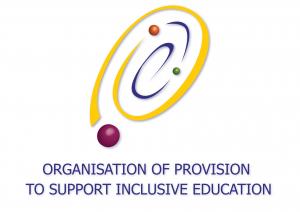Introduction
This resource aims to support dialogue between different stakeholder groups. The materials include papers and reports drafted as part of the Organisation of Provision (OoP) project, publications from other Agency projects and documents produced by other key agencies (e.g. UNESCO, UNICEF, OECD) that provide relevant information. The materials should be used as a stimulus to support a collaborative change process that will begin to address the OoP project recommendations on: child rights and participation; conceptual clarity and coherence and the development of a continuum of support.
Towards Capability - a rationale
During the OoP project, the terminology was developed as the project team reflected on their experiences and discussed emerging findings with a wide range of stakeholders.
Originally, reference was made to ‘strengthening the capacity of mainstream schools’. However, the term ‘capacity’ (the maximum amount that something can contain) has been replaced by ‘capability’ (the power or ability to do something). This was felt to more closely convey the intended meaning.
The main issues underpinning this thinking are set out in the table below.
Oriented towards capacity |
Oriented towards capability |
|
Quantitative in nature |
Qualitative in nature |
|
Associated with certainty/predictability - and possible limits |
No limits - more closely aligned to uncertainty/unpredictability |
|
Capacity building - may not imply improvement in quality. ‘More of the same’ may reinforce past practice |
Building capability - implies development and innovation |
|
May require more resources |
Should involve creative use of existing resources |
|
Could reinforce the idea of ‘filling’ learners (through instruction, teacher-led differentiation (for group needs), individualisation (using teacher-designed adaptations) |
Should emphasise listening to learners, starting ‘where they are’ (personalisation) and extending, passing responsibility to the learner |
|
Learners dependent on teacher guidance/support staff |
Learners increasingly independent and resilient |
|
Prescribed content, low level tasks for ‘less able’ learners |
Choice of content, peer support for all learners (co-operative) |
|
Assessment of/for learning (Performance orientation)
|
Assessment as/of learning (Learning orientation)
|
As can be seen, the ‘capability’ oriented system/school will be more participative. All stakeholders are considered to be learners, playing an active role in increasing the capability of themselves and others.
Core capabilities
The use of this resource - with other stakeholders - has the potential to contribute to the development of the following core capabilities and competences that underpin change management:
- Knowledge and understanding of the child rights agenda (UNCRC and UNCRPD) and its impact on national legislation and policy
- Clarity/vision regarding inclusive education to support coherent policy development
It might also be used to support:
- The ability to undertake a critical analysis of the current context as a starting point for development;
- Approaches that develop a culture of improvement through collaboration;
- Creativity and innovation (in pedagogy, curriculum, assessment, organisation and equitable resource allocation).
Teachers may use the materials to consider their responsibilities in relation to ALL learners, which will in turn require them to understand learners and adapt the curriculum and pedagogy, together with their colleagues.
These materials recognise the complexity of this area of work, and attempt to provide information that can be used to inform development in a range of country contexts. While there are a number of self-evaluation and support tools relating to inclusive education currently in use, many of these are country-specific. In addition, if they are used as checklists, they may do little to challenge thinking or bring about sustainable change.
The OoP materials here have been developed and agreed by a wide range of stakeholders at European level. Reform must focus on improving the school system and providing enabling environments to achieve both equity and excellence.
‘Quick fixes’ that treat symptoms such as poor results without addressing fundamental causes and empowering learners are unlikely to succeed in the long term.
Using the resource
The resource is structured around 5 key questions:
- How can the principles of the United Nations Convention on the Rights of the Child (UNCRC) and United Nations Convention on the Rights of Persons with Disabilities (UNCRPD) be embedded in national/local policy to ensure that all learners receive a quality education?
- What does inclusive education mean to stakeholders in our national/local context?
- How can provision be organised to meet the needs of all the school community?
- What restricts the participation and learning of all children and young people and what action can be taken?
- How can collaboration between key stakeholders support change and improvement?
Clicking on the any of the questions will take you to a new page that describes the various materials that are relevant to each question and provides a direct link to them. This includes extracts from the project literature review, reports and discussions, practical examples and quotes from key stakeholders at the sites visited and other documents from past Agency work and the work of other agencies working in the field of inclusive education.
All of these materials aim to help bridge the gap between theory and practice. Key ‘talking points’ and questions are also set out to provide a possible basis for stakeholder discussions. In order to gain the most benefit, participants should read the relevant extracts from the materials in advance and consider the suggested questions that aim to challenge ‘traditions’ and disrupt conventional thinking. Such an analysis of their current context – and their own practice - is an appropriate starting point for change.
